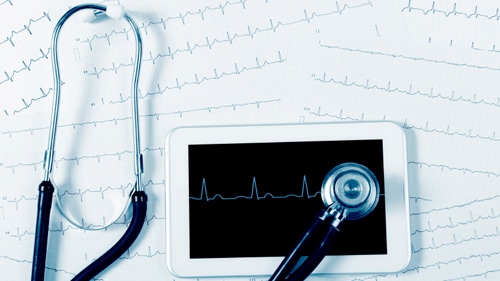For technology to have big impact on healthcare, care programs need to be reinvented as technology alone cannot improve outcomes and reduce costs.
May 1, 2015

For technology to have big impact on healthcare, care programs need to be reinvented as technology alone cannot improve outcomes and reduce costs.
Arundhati Parmar
It's an exciting time in healthcare, believes Sean Hughes, vice president at Philips design who leads the firm's its strategic design consulting effort.
Data and connected devices are helping to move healthcare beyond the walls of the hospital into other care settings including the home. But while technology can enable the transition, ultimately success will be tied to how processes, design and care delivery programs evolve to meet the new demands caring for patients at home. Moving care of patients to their homes and monitoring them remotely leveraging technology is a way to reduce overall healthcare costs of treating
"You can create a great piece of technology, but in order for it to work you need the doctor, the nurses, the institution and the patient who will agree to use it, Hughes said. "It has to be designed around their requirements and their needs, which aren't all the same. At Philips it's not about just the technology. It's about sensible deployment and customization of technology to fit a particular care program or fit the particular care provider's needs or the particular patient's requirement."
Hughes will be a keynote speaker at the MD&M East Conference and Tradeshow, June 9-11 in New York City, addressing the opportunities that data and connectivity are providing to transform how healthcare is delivered.
"Once care moves to the home, data and connectivity [will be] the glue that will help the physicians gather the insights, the longitudinal view of the patient," he explains.
But technology alone won't improve outcomes. For that to happen, designing new care programs that leverage new, connected devices is key.
Hughes described a pilot program that Philips ran with Banner Health called eIAC (Intensive Ambulatory Care) that sought to connect chronically ill patients who were able to walk around to their care providers remotely and prevent them from making emergency trips to the hospital.
"In the case of Banner Health, we said if you want to solve the problem of reducing cost of your 5% most expensive patient population - who are patients with chronic disease - and you want to use technology, then you have to rethink how you do care," he says of the pilot study done last year. "You are going to need to have coordinated care teams, you are going to have to make nurses mobile, make them drive around and see patients because patients are no longer coming to the hospital."
In other words, the "delivery mechanism has to be rethought and re-engineered as well as the technology that you deploy."
Philips gave them a tablet device and smart devices like blood pressure devices and weighing scales and trained the patients who participated in the program. The tablet collected and wirelessly transmitted weight and blood pressure readings. If patients were anxious about something health related, they could use the tablet device to schedule a video chat with physicians and care team in addition to regular video check ups.
The care coordination team would review vital signs information using data from blood pressure devices and scales remotely and intervene by having them come to the clinic if they deemed it appropriate. That is a significant departure from waiting to see these same, ill patients in the emergency room for even minor problems.
The pilot was successful and Philips is eager to expand it to other providers in the U.S. and abroad. It is now ongoing at Banner having graduated from a pilot phase, Hughes says. A pilot program is running in Singapore currently.
For patients too, it has been a boon because now they don't have to visit the hospital to get care eliminating potential long rides.
But perhaps one of the most interesting lessons of the program was how different devices could work together to provider a better picture of a patient's health. In addition to Philips' tablet device, the blood pressure devices and weighing scales for instance were manufactured by other companies. Some patients even wore personal emergency response devices.
"The important thing that device manufacturers need to think of going forward is [being] open - openness of their ecosystems," Hughes declares.
Arundhati Parmar is senior editor at MD+DI. Reach her at [email protected] and on Twitter @aparmarbb
You May Also Like


